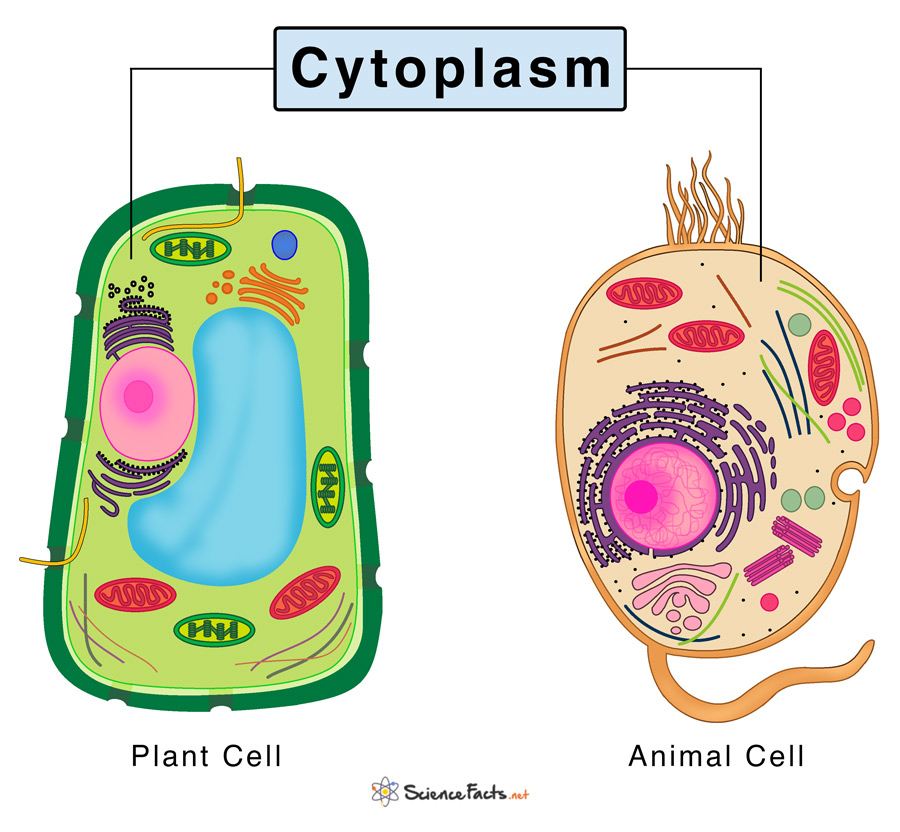Structure: What is Cytoplasm Made Of
Properties
Functions: What Does the Cell Membrane Do
Layers
It is divided into two layers: a) ectoplasm – found below the cell membrane and made of the outer clear and glassy layer, consisting of a thick and jelly-like substance known as the plasmogel; b) endoplasm – found below the ectoplasm as the inner granular mass, consisting of a thin and liquefied fluid called the plasmosol with suspended cell organelles.
Parts
The three major componentsof the cytoplasm of a eukaryotic cell are described below:
Acting as the site of many enzymatic reactions, and metabolic activities of the cell. Cellular respiration begins in the cytoplasm, whose products help mitochondria generate ATP, the cell’s energy currency. The cytoplasm is also the site of protein synthesis and is important for cell division.Acting as a buffer that protects the genetic material and organelles of the cell from damage due to an external shock. Maintaining proper osmotic pressure of the cell, thus helping in maintaining a stable internal environment (homeostasis).
Other Important Functions
Helping in cell growth and expansion.Providing a medium for all the cell organelles to remain suspended.Creating an order within the cell for each organelle, providing each of them with specific locations through the movement of cytoplasm (cytoplasmic streaming). For example, in plants, the chloroplast’s location is close to the cell membrane to optimize photosynthesis. In both plant and animal cells, the positioning of the endoplasmic reticulum and Golgi apparatus with respect to the nucleus and cell membrane helps in the transport of proteins outside the cell.Distributing nutrients through the entire cell. Containing the subunits necessary for the formation of cell cytoskeleton that helps in maintain the cell’s shape and motility.Playing host to two organelles that contain their own genomes – the chloroplast and mitochondria. These help in the transfer of genetic material outside the nucleus directly from mother to the offspring (cytoplasmic inheritance).
